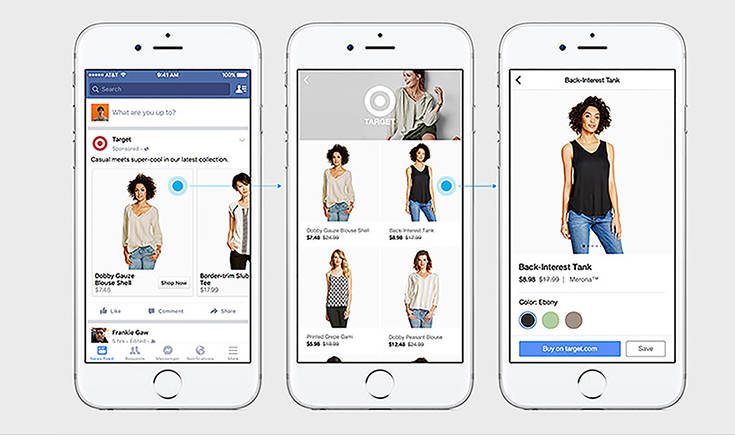As of recently Facebook has introduced a new e-commerce feature to their social media platform. Their strategy involves turning your News Feed into an online store by creating a Shopping tab that can be found alongside the Messages and Events tabs. This new feature is Facebook’s attempt at entering new markets and competing with e-commerce giant Amazon. The project is mainly aimed at big brands and gives them the ability to catalogue their merchandise on the social media platform and have customers buy their products directly from the site rather than clicking on an advertisement and being redirected to their own company website. It also provides the opportunity for customers to contact brands and track their packages through messenger, in a similar way that can be done on brand websites.
 There are a number of strengths and weaknesses to this new feature with the first strength being that it allows brands to extend their number of selling platforms, and since Facebook has already established themselves as an effective platform for online communicating and advertising, it makes it very appealing for businesses. Secondly, the feature is free for companies; therefore they are paying nothing for something that will most likely increase their profits. User experience on the mobile application will also improve because unlike traditional advertisements the Shopping feature will have products managed in the same way as photos, which will make them easily accessible and more user friendly. As for Facebook, it means that people will be spending more time on their site rather than users transferring to other websites and; in a positive for Facebook, it will mean that they have greater data collection on their users than anyone else.
There are a number of strengths and weaknesses to this new feature with the first strength being that it allows brands to extend their number of selling platforms, and since Facebook has already established themselves as an effective platform for online communicating and advertising, it makes it very appealing for businesses. Secondly, the feature is free for companies; therefore they are paying nothing for something that will most likely increase their profits. User experience on the mobile application will also improve because unlike traditional advertisements the Shopping feature will have products managed in the same way as photos, which will make them easily accessible and more user friendly. As for Facebook, it means that people will be spending more time on their site rather than users transferring to other websites and; in a positive for Facebook, it will mean that they have greater data collection on their users than anyone else.
However, there are also a number of weaknesses to the feature with the first continuing on from the last point made in the previous paragraph. Facebook will have a significant sized data storage of millions of users, which to everyone else is seen as a major privacy concern. As the feature continues to grow Facebook could also begin to start charging brands for the service and subjecting them to all kinds of rules that could prove to be less beneficial for the companies.

An interesting question though is what does this mean for amazon? At the moment the feature seems promising and Facebook is clearly a well-established business with a large community, giving it a good starting advantage. However, there are also several other competitors that have moderately successful similar features, but have not come close to taking over amazon, including Google, Twitter and Pinterest. As well as that Facebook has had several failed attempts at entering foreign markets for instance, when they tried to compete with LinkedIn as a professional networking service.
Personally, I do not like the idea, not because it is not a good one, but if Facebook becomes a leader in eCommerce, what’s to stop it from entering other markets. Although there was a failed attempt at competing with LinkedIn as a professional networking site it does not mean it will hinder any plans of Facebook to correct issues and try again. Even then there are many ways Facebook are trying to keep people on their sites for longer, even by introducing hot topic articles. Who is to say that Facebook won’t be the place where you can connect with friends and connect with work or potential employers, shop for clothes, groceries, appliances, catch up on news, internet banking, eventually start doing everything in one place. Where are the boundaries?
Facebook is a business and although I am only one user out of a billion. The idea that everything I need will be in one location; which in theory is convenient. The fact that there is no longer a separation between these different parts of my life is unsettling.
References
- Facebook introduces new shopping features. (2015, October 12). http://money.cnn.com/2015/10/12/technology/facebook-shopping-feed/index.html
- Facebook is taking on Amazon with shopping pages. (2015, July 16). http://money.cnn.com/2015/07/16/technology/facebook-buy/index.html?iid=EL
-
Parker, R. (2015, September 22). Facebook’s New Shopping Features, and What They Mean For Your Brand | Return On Digital.
http://www.returnondigital.com/blog/facebooks-new-shopping-features-and-what-they-mean-for-your-brand
- Yoffie, D., Slind, M., & Achsaf, N. (2009). LinkedIn Corp., 2008. Harvard Business Review, 1-19.


